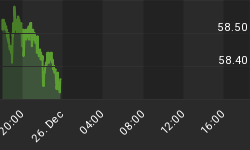This Friday's release on nonfarm payrolls will shine a burning light on our nation's need to promote growth and create new jobs. After losing 2.7 million jobs in 2008, projections are to start off 2009 with a 500 million reduction in payrolls. The unemployment rate which closed the year at 7.2% is expected to climb to 7.4% in this latest report.
The reason for the continued pessimism in employment trends can be derived in the recent job cut announcements from U.S. major employers. For example, in January alone these companies announced work force reductions in the following percentages; Eastman Kodak 18%, Caterpillar 18%, WellPoint 36%, Rohm & Haas 59% and Circuit City 100%. According to the Wall St. Journal, a small sampling of just 52 listed firms announced a total of 241,300 job cuts thus far in 2009.
The Obama administration's response to creating jobs is a massive government debt and spending regimen that will, in his aspirations, create 4.1 million jobs -- a number which has itself grown from just 2.5 million this past fall. His plan ignores both economics and history.
What helped turn the great recession into the Great Depression was the Revenue act of 1932. The act raised rates on income, estate and corporate taxes. The result was a maximum unemployment rate of 20% and a net change of GDP of -18.2% between May of 1937 through June 1938 -- nine years after the crash of 1929. There were other exacerbating forces such as a move toward protectionism, but clearly all of Roosevelt's efforts to end the Depression did not bring about an end to unemployment or a return to trend G.D.P. growth even towards the beginning of WWll.
That's because growth does not come from money printing or government deficit spending. It comes from encouraging the private sector to create new technologies and innovations that expand the amount of goods and services available for consumption. That can only be achieved by incentivizing the private sector to take risks (tax cuts). It also requires low interest rates that themselves can only truly be provided through sound monetary and fiscal policies.
Investors understand the true derivation of growth and they understand that some things take time and cannot be forced or manipulated to occur by a central planning authority. They understand that the private sector is best at creating jobs that are viable and accretive to economic growth. Perhaps that is the reason why investors greeted the New Year with the worst January performance on the S&P 500 and Dow Jones Industrial average ever.
Consumers can always hope for a favorable report this Friday, but the evidence in so far does not offer much hope and the administration's reaction to the economic malaise promises more pain ahead in the future.
Be sure to listen in on my Mid-Week Reality Check.















